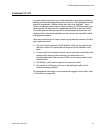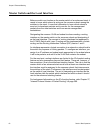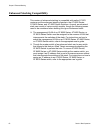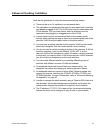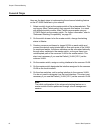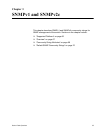
Chapter 2: Enhanced Stacking
64 Section I: Basic Operations
General Steps
Here are the basic steps to implementing the enhanced stacking feature
on the AT-9400 Switches in your network:
1. Select a switch to act as the master switch of the enhanced stack. This
can be any Allied Telesis switch that supports this feature. In a stack
with different switch models, Allied Telesis recommends using an
AT-9400 Switch as the master switch. For further information, refer to
“Enhanced Stacking Compatibility” on page 62.
2. On the switch chosen to be the master switch, change its stacking
status to Master.
3. Create a common port-based or tagged VLAN on each switch and
connect the devices using twisted pair or fiber optic ports of the VLAN.
As mentioned earlier, the slaves switches can be connected indirectly
through other switches to the master switch, so long as there is an
uninterrupted path of the common VLAN to the master switch. This
step is not necessary if you use the Default_VLAN (VID 1) as the
common VLAN.
4. On the master switch, assign a routing interface to the common VLAN.
5. On the master switch designate the interface assigned to the common
VLAN as the local interface.
6. On the slave switches, add a routing interface to the common VLAN.
You do not need to designate it as the local interface. This step is not
necessary if you use the Default_VLAN (VID 1) as the common VLAN.
Note
The initial configuration of the enhanced stacking feature on a
master switch must be performed through a local management
session.






